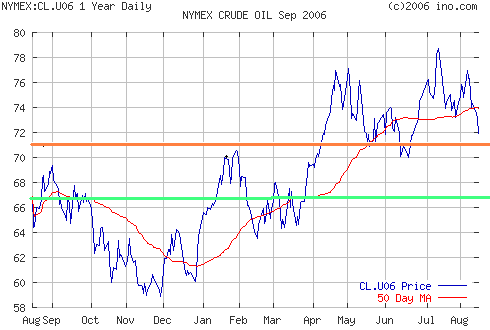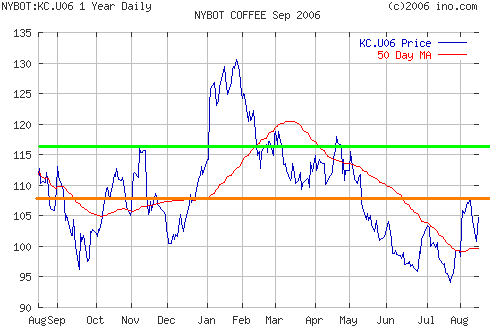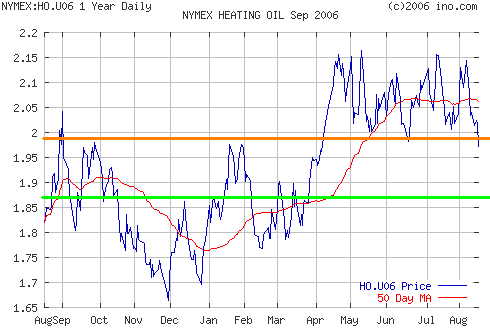Here’s How I Trade Reversals in the Futures Market
As I watched the movie version of Dan’s Brown’s best-selling
novel “The Da Vinci Code”, I got to see a simple investing strategy that
I use every single day right up there on the big screen, Fibonacci Numbers!
O.K., Tom Hanks didn’t exactly relate the use of Fibonacci Numbers back to where
to buy the September E-Mini, but the movie did show how a sequence of numbers
originally investigated in the year 1201 is relevant to so many things, from
popular culture, science, and investing.
Let me tell you a little about myself. After college graduation in 1986 I began
my futures career on the floor of the Chicago Board of Trade working as a runner
on the grain floor. I progressed to doing grain market research and then began
handling client business in 1988. From that time on, I have been involved in
some capacity of futures trading system administration or management. I haven’t
seen it all, but I have seen a lot. Over the years I have written articles for
Futures Magazine, and SFO Magazine. My articles have also appeared on
FutureSource.com and Bondheads.com. I currently oversee operations for an
Introducing Broker headquartered in California called Trade Center, LLC.
What I will teach you in this article is how to calculate and use Fibonacci
numbers to find support and resistance levels for the futures and stocks you
trade. I myself have found these levels to be quite useful.
What are Fibonacci Numbers?
First, a little background on what Fibonacci numbers are and where they came
from. In doing research for a book in 1202, mathematician Leonardo Pisano set
about to study patterns in numbers identified by another countryman named
Fibonacci, as they applied to some rabbits in his garden. The example he started
with was this: If you started with a pair of baby rabbits enclosed in the garden
and assumed that each pair of rabbits bears a new pair each month, which from
the second month on itself becomes productive, how many pairs of rabbits will be
in the garden at the end of a years time?
As the months go by in the garden, a given sequence of numbers (pairs or
rabbits) 1,1,2,3,5,8,13,…occurs. Leonardo noted that the sequence is that each
number after the second 1 is equal to the sum of the two previous numbers. Thus,
1+1=2, 1+2=3, 2+3=5, and so on. Now back in the garden, each month, the new
rabbit births consist of one pair born to each of the newly adult pairs plus one
pair for each of the earlier adult pairs. By reading out in the sequence to the
twelfth number you get 144 pairs.
These numbers as it turns out appear in nature over and over again. The number
of petals found on most flowers equals a Fibonacci number. An iris has 3 petals,
an aster 21, a daisy 34. Counting the beautiful spirals on a sunflower you will
find 21, 34, and 55. All are Fibonacci numbers.
Another interesting property of these numbers is that any given number is 1.618
times the preceding number. And 0.618% of the next number
34/55 = 55/89 = 144/233 = 0.618
55/34 = 89/55 = 233/144 = 1.618
One more interesting Fibonacci fact: If you take any two adjacent values and
divide each by their sum:
Fibonacci Numbers 5,8 5/13 (sum of 5 and 8) = 38.5%
8//13 (sum of 5 and 8) = 61.5%
8,13 8/21 = 38.1%
13/21 = 61.9%
Often referred to as the “Golden Ratio†this property is the link to nature, and
in turn market prices.
Thus, the two magic numbers are 38% and 61.8%
Putting it to work
O.K., so we have identified Fibonacci numbers. Now what? These two numbers can
now be used for support and resistance numbers for virtually any market.
Example # 1
I primarily use Fibonacci numbers to determine where to buy or sell a market.
The basic thought is that all markets retrace at some point. For a market to
retrace back 38% from it’s high point is sometimes known as a natural
retracement. To calculate this point we take the recent high, in this case Crude
Oil at $79 and subtract the significant low point of $59.
High — low = swing point
$79 – $59 = $20
To find the 38% Fibonacci Retracement point, and perhaps a golden buying
opportunity, we take the swing point value of $20 and multiply it by 0.38. This
equals $7.60. Now, subtract the swing point value from the high of $79 to get
our buy point of $71.40!
$20 X 0.38 = $7.60
$79 – $7.60 = $71.40
A major retracement is the 61.8% Fibonacci point. The process to get this buy
point is the same as above, simple substitute the 38% for the 61.8%
$79 – $59 = $20
$20 X 0.618 = $12.36
$79 – $12.36 = $66.64
I have included a chart of crude oil and drawn in the two Fibonacci numbers to
illustrate how the two might be great buying points should crude oil start to
fall. Orange represents the 38% Fibonacci number and green the 61.8%.

Example # 2
What about using Fibonacci points to find a selling point? All the same
principals apply, we just need to invert the numbers. Here is an example of a
declining market, coffee.

As in the first example, orange is the 38% Fibonacci number and green is the
61.8%.
Here is how they were calculated:
Recent high = 130.5
Recent low = 94.5
130.5 — 94.5 = 36 (swing point)
36 X .38 = 13.68 (38% Fibonacci point)
36X .618 = 22.25 (61.8% Fibonacci point)
This time we ADD the Fibonacci point to the LOW price to get our points.
94.5 + 13.68 = 108.18 (38% Fibonacci point)
94.5 = 22.25 = 116.75 (61.8% Fibonacci point)
Now we have some selling points should the market rally and retrace part of the
down move. Also note how coffee rallied to exactly the 38% retracement in August
of this year!
Example # 3
Now let’s look at an example of a market that has seen prices fall below the 38%
Fibonacci number already. The next key level to target is the 61.8% number. Take
a look at Heating Oil

Again, orange is the 38% and green, the 61.8%. You can see the major support
that the 38% mark provided at an area just below 2.00.
Here is how they were calculated:
Recent high = 2.175
Recent low = 1.675
2.175— 1.675= 0.5000 (swing point)
0.5000 X .38 = 0.1900 (38% Fibonacci point)
0.5000 X .618 = 0.3090 (61.8% Fibonacci point)
This time we subtract the Fibonacci point to the high price to get our points.
2.175 – 0.1900 = 1.985 (38% Fibonacci point)
2.175 – 0.3090 = 1.866 (61.8% Fibonacci point)
Conclusion
Fibonacci points are easy to calculate and use. In my opinion they are also very
powerful. Try it out on paper for a while. No matter whether it is a commodities
or stock chart, I think you will find they work for you too.
For more information about Trade Center or to reach
Scot Hicks, go to:
www.tradecenterinc.com.
